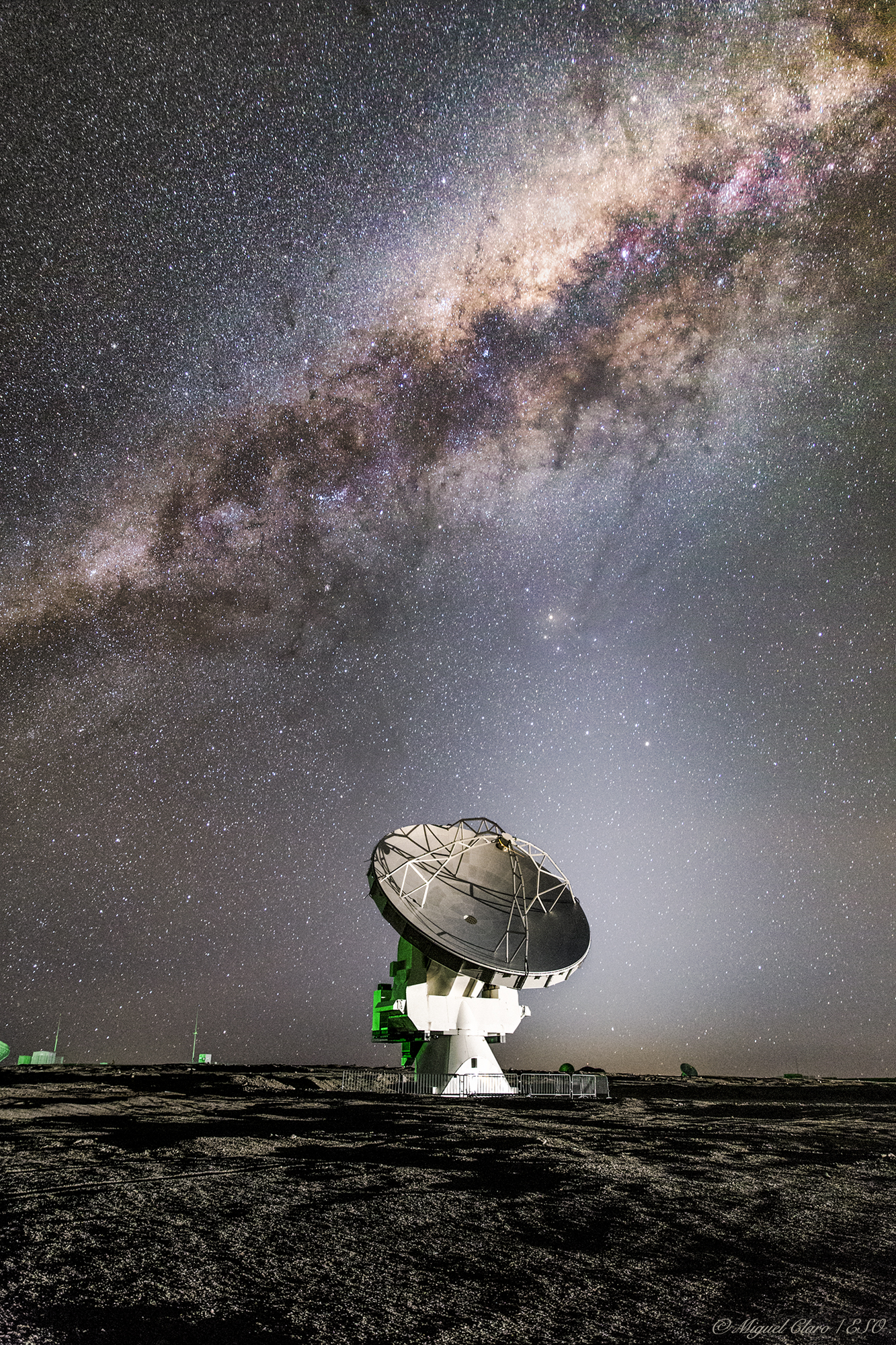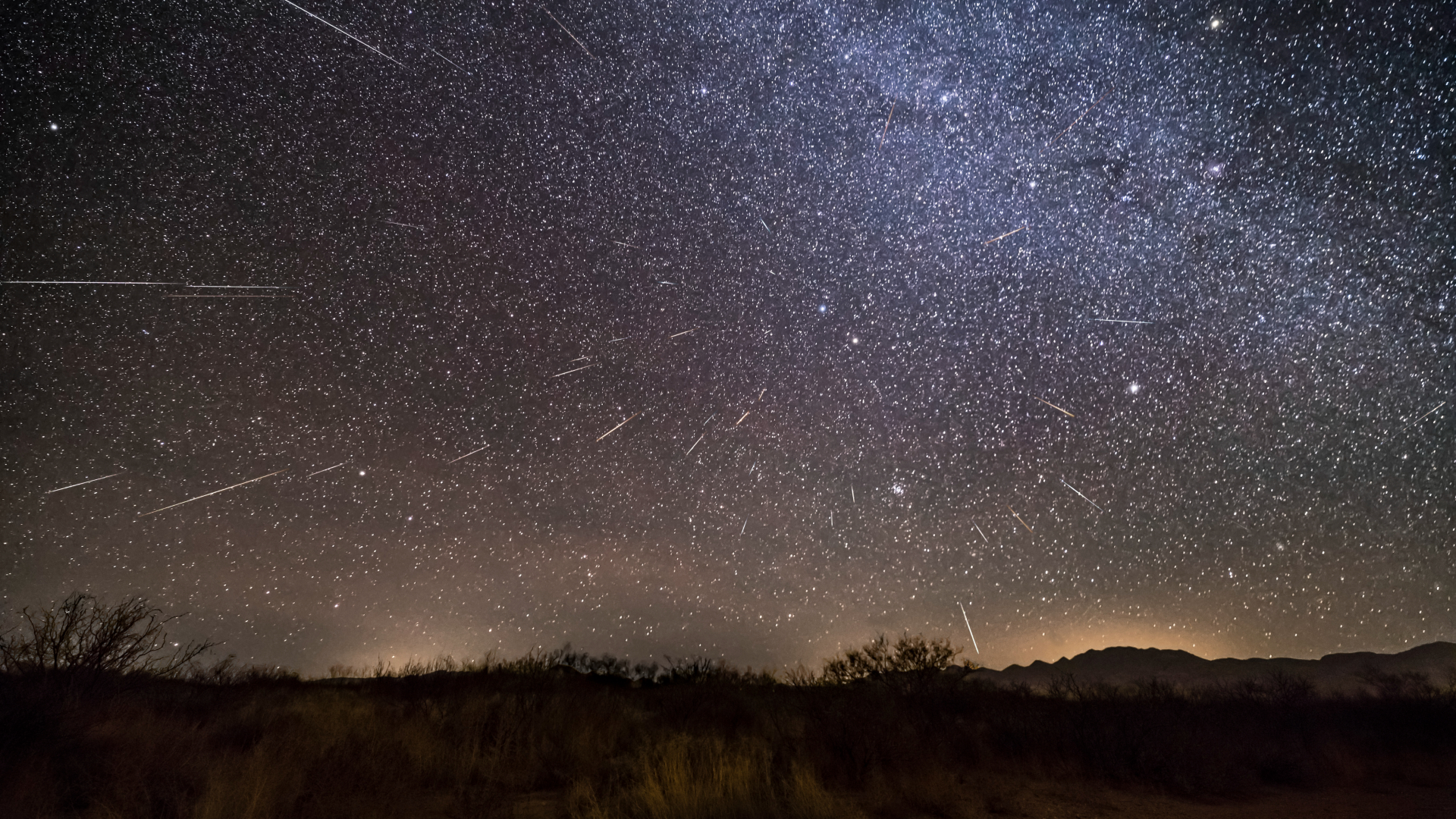Milky Way Glitters Over ALMA Radio Telescope in Stunning Photo

The heart of our galaxy, full of molecular gas and dust, is shown in stunning detail atop the Atacama Large Millimeter/submillimeter Array (ALMA) radio telescope in Chile
This image was taken by Miguel Claro on Oct., 14, 2015 from Chajnantor plateau, Atacama desert, Chile. ALMA is an astronomical interferometer of radio telescopes with a a powerful variable "zoom" created by combining the input of 66 antennas. ALMA has a maximum resolution which is sometimes better than that achieved, at visible wavelengths, by the Hubble Space Telescope.
"Astronomers can use it [ALMA] to study the chemical and physical conditions in molecular clouds — the dense regions of gas and dust where new stars are being born. Often these regions of the Universe are dark and obscured in visible light, but they shine brightly in the millimetre and submillimetre part of the spectrum," Claro wrote on his website.
Our host galaxy, the orange star Antares from the constellation Scorpius and a faint white Zodiacal light can all be seen in this image. You can tell the difference between the zodiacal light and the Milky Way by its position in the sky, by its shape (conical or triangular, rather than a strip of constant width), and by its faintness.
To see more amazing night sky photos submitted by readers, visit our astrophotography archive.
Editor's note: If you have an amazing night sky photo you'd like to share with Space.com and our news partners for a possible story or image gallery, send images and comments in to spacephotos@space.com.
Follow us on Twitter @Spacedotcom. We're also on Facebook and Google+. Original story on Space.com.
Breaking space news, the latest updates on rocket launches, skywatching events and more!
Nina Sen is a freelance writer and producer who covered night sky photography and astronomy for Space.com. She began writing and producing content for Space.com in 2011 with a focus on story and image production, as well as amazing space photos captured by NASA telescopes and other missions. Her work also includes coverage of amazing images by astrophotographers that showcase the night sky's beauty.

